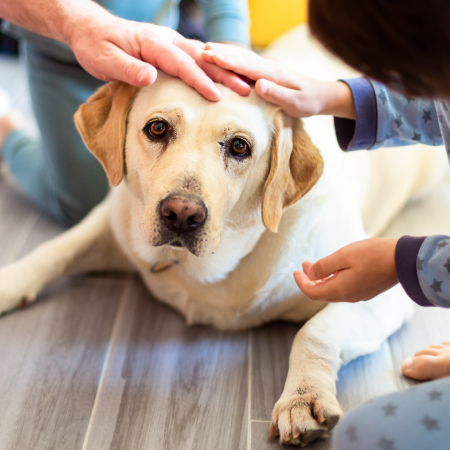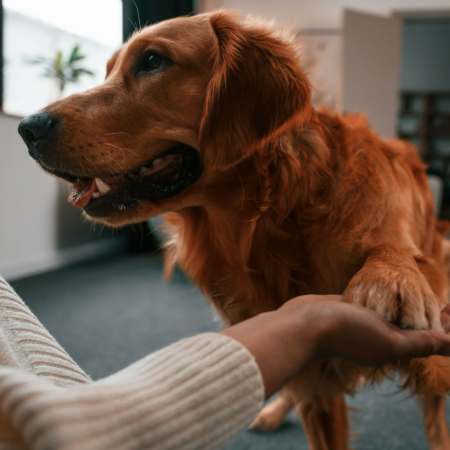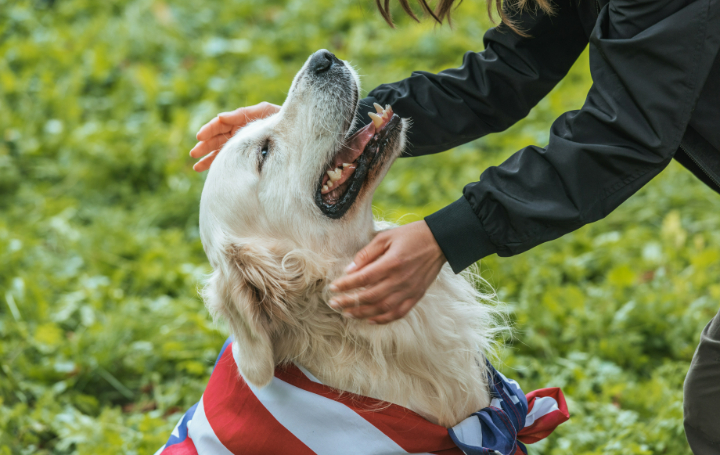The Role of Dogs in Pet-Assisted Therapy: Healing Through Companionship
If you’ve ever had a dog, you know that they have a magical way of making bad days better. Their wagging tails, goofy antics, and endless love can turn even the darkest moments into something bright. But did you know that dogs do more than just make us smile? They play a huge role in pet-assisted therapy, helping people heal in ways that medicine alone sometimes can’t.
What is Pet-Assisted Therapy?
Pet-assisted therapy (also called animal-assisted therapy) is when trained animals help people deal with physical, emotional, or mental health challenges. While different animals, including cats, horses, and even rabbits, can be used in therapy, dogs are the true MVPs. Their friendly nature, ability to bond with humans, and natural instinct to provide comfort make them perfect therapy companions.

This type of therapy is used in hospitals, nursing homes, schools, rehabilitation centers, and even prisons. It helps people of all ages—from children struggling with anxiety to seniors battling loneliness. The presence of a therapy dog can reduce stress, improve mood, and even speed up physical recovery.
How Do Therapy Dogs Help?
Therapy dogs do much more than just sit beside someone and look cute (though that’s a big part of it!). They provide comfort, encourage communication, and help people open up in ways they might not with humans. Let’s break down some of the ways therapy dogs work their magic:
1. Reducing Stress and Anxiety
Life can be overwhelming, and stress seems to be everywhere. But imagine being in a hospital, facing surgery, or struggling with depression. In moments like these, a therapy dog can be a game-changer. Studies have shown that simply petting a dog lowers cortisol (the stress hormone) and increases oxytocin (the feel-good hormone). This means less anxiety, fewer panic attacks, and more smiles.
2. Boosting Social Interaction
For people who struggle to connect with others—like those with autism or social anxiety—therapy dogs provide a bridge. A dog can make conversations easier and less intimidating. A child who finds it hard to talk to a therapist might feel comfortable reading to a dog or petting one while they open up about their feelings. Dogs don’t judge, and that makes all the difference.
3. Providing Physical Benefits
It’s not just emotional healing—therapy dogs also help people physically. In rehabilitation centers, patients recovering from strokes or injuries might find it easier to do exercises when a dog is involved.

Walking, reaching, or even throwing a ball at a dog can help improve motor skills and coordination. Plus, therapy dogs motivate people to get moving, which is essential for recovery.
4. Bringing Comfort to Seniors
Aging can be lonely. Many elderly people in nursing homes or assisted living facilities feel isolated. Therapy dogs provide companionship, warmth, and unconditional love. Petting a dog can trigger happy memories of past pets, reduce feelings of sadness, and even help lower blood pressure. Some therapy dogs are trained to sit on laps or gently cuddle, providing much-needed affection for those who miss human touch.
5. Helping Children with Learning Disabilities
Reading out loud can be scary for kids who struggle with dyslexia or other learning disabilities. But what if their audience had soft fur and big, understanding eyes? Therapy dogs are often used in schools to help children become more confident readers. When a child reads to a dog, there’s no pressure or embarrassment—just a wagging tail and quiet encouragement.
6. Supporting People with PTSD
Post-Traumatic Stress Disorder (PTSD) affects many people, especially veterans and trauma survivors. Therapy dogs provide comfort and a sense of safety. They can help reduce nightmares, ease hypervigilance, and create a calming presence in stressful situations. Some specially trained service dogs can even detect when their owner is having a panic attack and help interrupt it by providing deep pressure therapy (leaning against their person) or guiding them to a safe place.
What Makes a Great Therapy Dog?
Not every dog is cut out for therapy work. The best therapy dogs have specific qualities that make them excellent at their job:
- Friendly and Gentle: They must love people and be comfortable being petted by strangers.
- Calm and Patient: They should be able to handle loud noises, medical equipment, and different environments without getting scared.
- Obedient and Well-Trained: They need to follow commands like “sit,” “stay,” and “leave it.”
- Intuitive and Affectionate: They should be able to sense when someone needs comfort and respond with love.
Breeds like Golden Retrievers, Labradors, Poodles, and Cavalier King Charles Spaniels are often great therapy dogs, but any dog with the right temperament can do this work.
How Therapy Dogs are Trained
Therapy dogs go through special training programs where they learn how to behave in hospitals, schools, and other settings. They must be comfortable with wheelchairs, medical smells, and people who may be sick or upset. After training, they are certified by organizations like the American Kennel Club’s Therapy Dog Program or Therapy Dogs International.
Handlers (the people who work with therapy dogs) also receive training to ensure they can guide their dogs effectively and interact properly with patients.
How to Get Involved
If you think your dog has what it takes to be a therapy dog, you can start by:
Assessing their personality – Does your dog love people? Are they calm and friendly?
Basic obedience training – They should know essential commands like “sit,” “stay,” and “come.”

Socializing them – Expose them to different environments, sounds, and people.
Joining a therapy dog training program – Many organizations offer certification programs to ensure dogs and handlers are ready for therapy work.
If you don’t have a dog but love the idea of pet-assisted therapy, you can volunteer at local organizations or support therapy dog programs through donations or advocacy.
The Power of a Wagging Tail
Dogs have an incredible way of touching our hearts. Whether they’re helping a child learn to read, comforting a grieving person, or simply making someone’s day a little brighter, therapy dogs remind us of the power of love and companionship.
The best part? You don’t need a certified therapy dog to experience this magic. Any dog, big or small, has the ability to bring joy and healing into our lives. So next time you cuddle your furry friend, remember—you’re holding a little piece of therapy in your arms.
Tags










